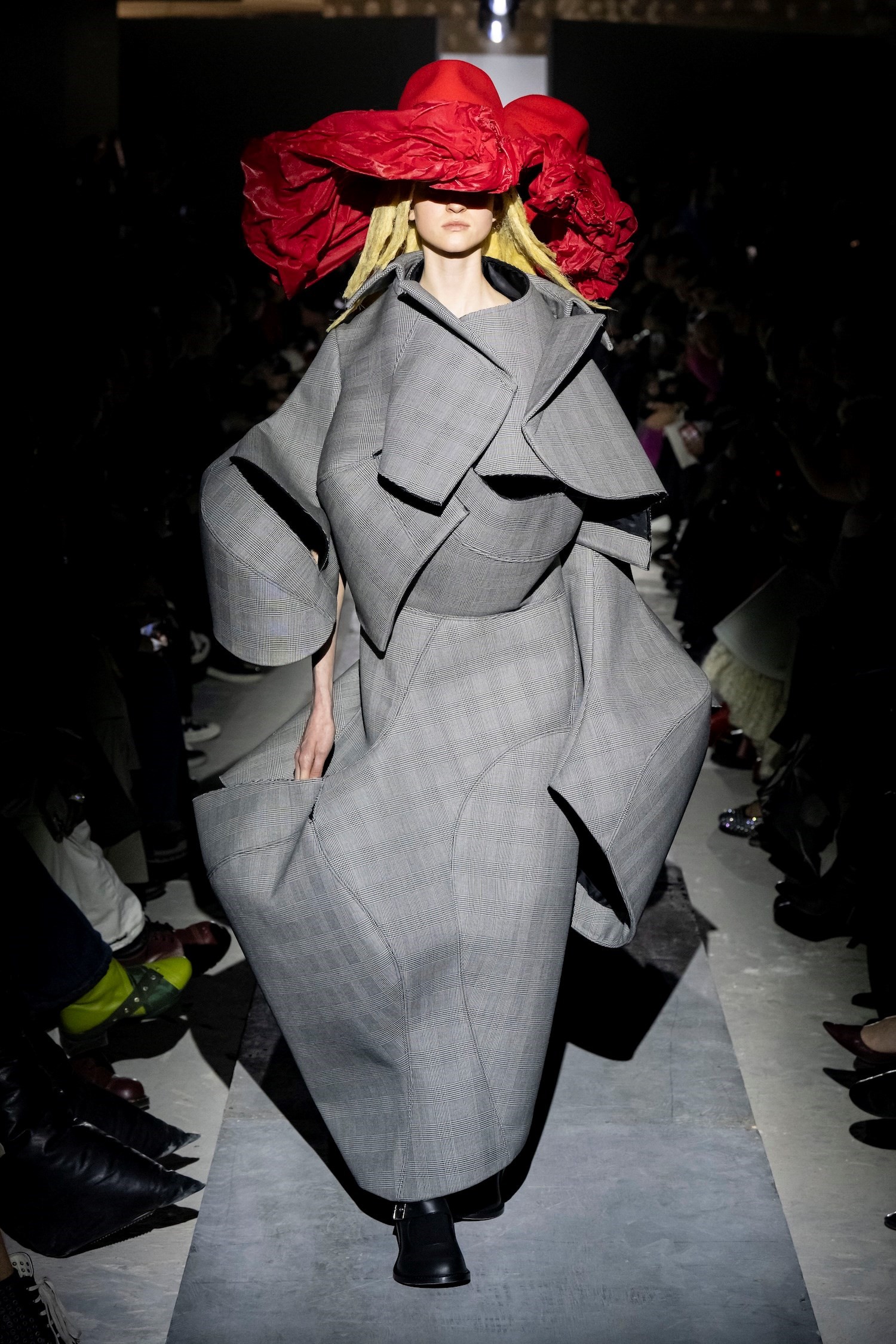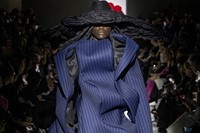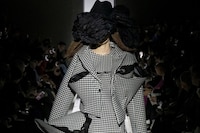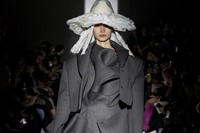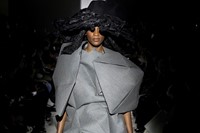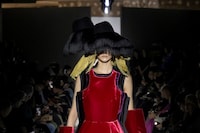“Recently we feel that big business, big culture, global systems, world structures maybe are not so great after all. There is also strong value in small. Small can be mighty.” Let’s begin with the words of Rei Kawakubo, dispersed to press after her extraordinary Autumn/Winter 2025 Comme des Garçons womenswear show. Specific though they were to this collection, they feel universal – a direct distillation of her point of view on fashion, which is, perhaps naturally, a rebellious voice against the direction the rest of the world is thrusting in. Certainly, it’s against received notions of progress in fashion which, today, has become a truly big business, with houses achieving turnovers that dwarf entire nations.
But does that make for great fashion? Growth requires pleasing most of the people most of the time. It necessitates compromise. Both of those ideas are anathema to Kawakubo, to Comme des Garçons – the label was founded when, working as a stylist in the 1960s, Kawakubo couldn’t find the clothes she wanted. So she made her own. She continues to, creating extraordinary clothes like no one else, that question, and provoke, and push.
With her explanation in mind, we can contextualise this latest collection. The initial outfits came in menswear fabrics, pinstripes and houndstooth tweeds and checks whose usually rigid forms bubbled into curved undulations that could be seen as feminine, an undermining of corporate hegemony, a breaking-apart of the men in suits. That idea carried on, with fissures of fabric sprouting flowers. There were outfits apparently constructed of stacked dresses in velvet, laid one atop the other; another of tiered satins in shades of pink.
These dresses were big in and of themselves, of course. Some of the structures were enormous, the models’ chins held involuntarily erect through the pile-up of cloth beneath them, heads crowned with vast picture-hats that, perhaps, echoed the dress of a different century, another time. “Of course I’m conscious of history, it goes without saying,” Kawakubo has said about her references to the past. “There's never any literal transmission.” But in expressing those feelings, there were shadows of a simpler past. Or, indeed, maybe it was a past just as obsessed with empire-building as our own, but remembered with a rose-tinted haze of nostalgia?
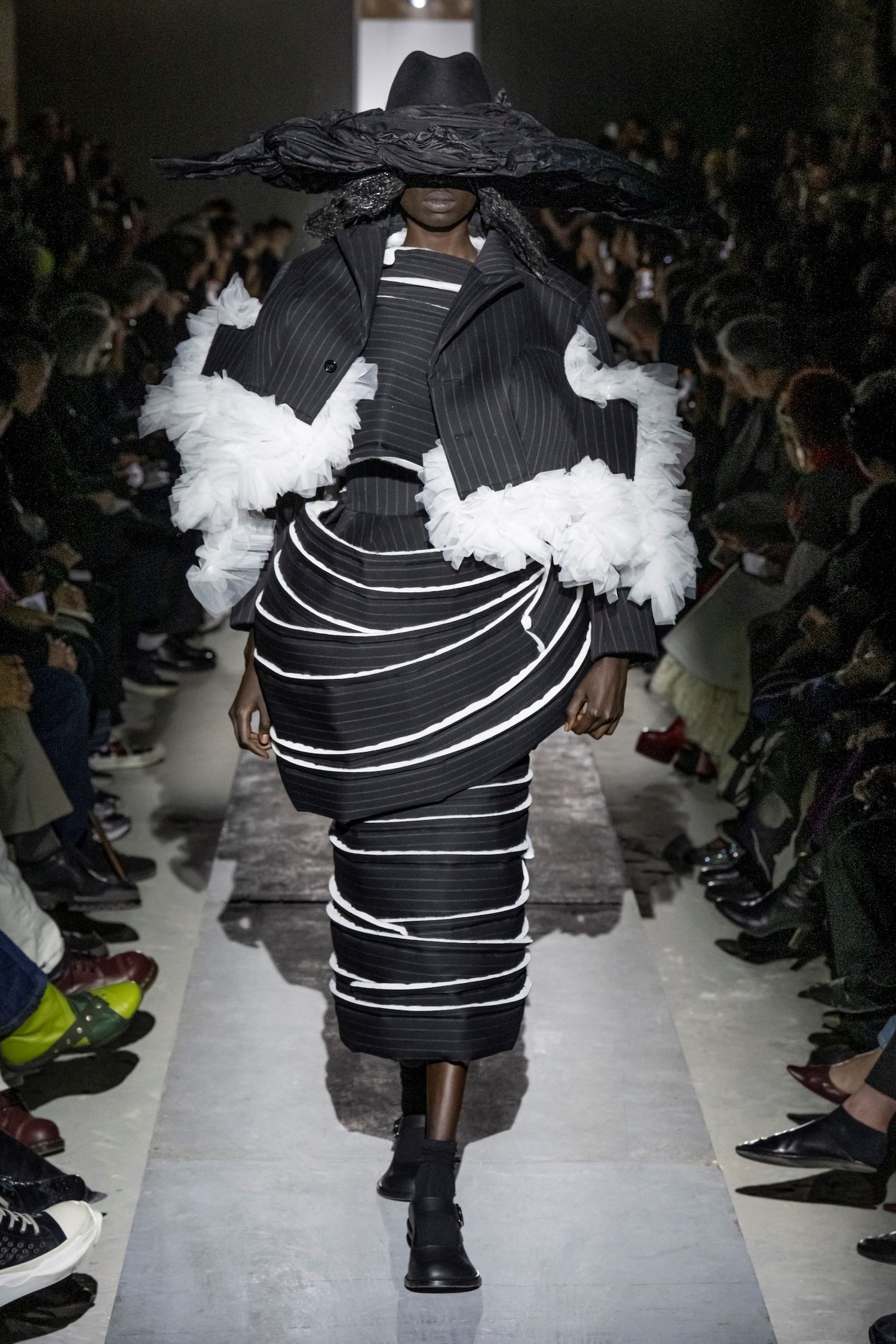
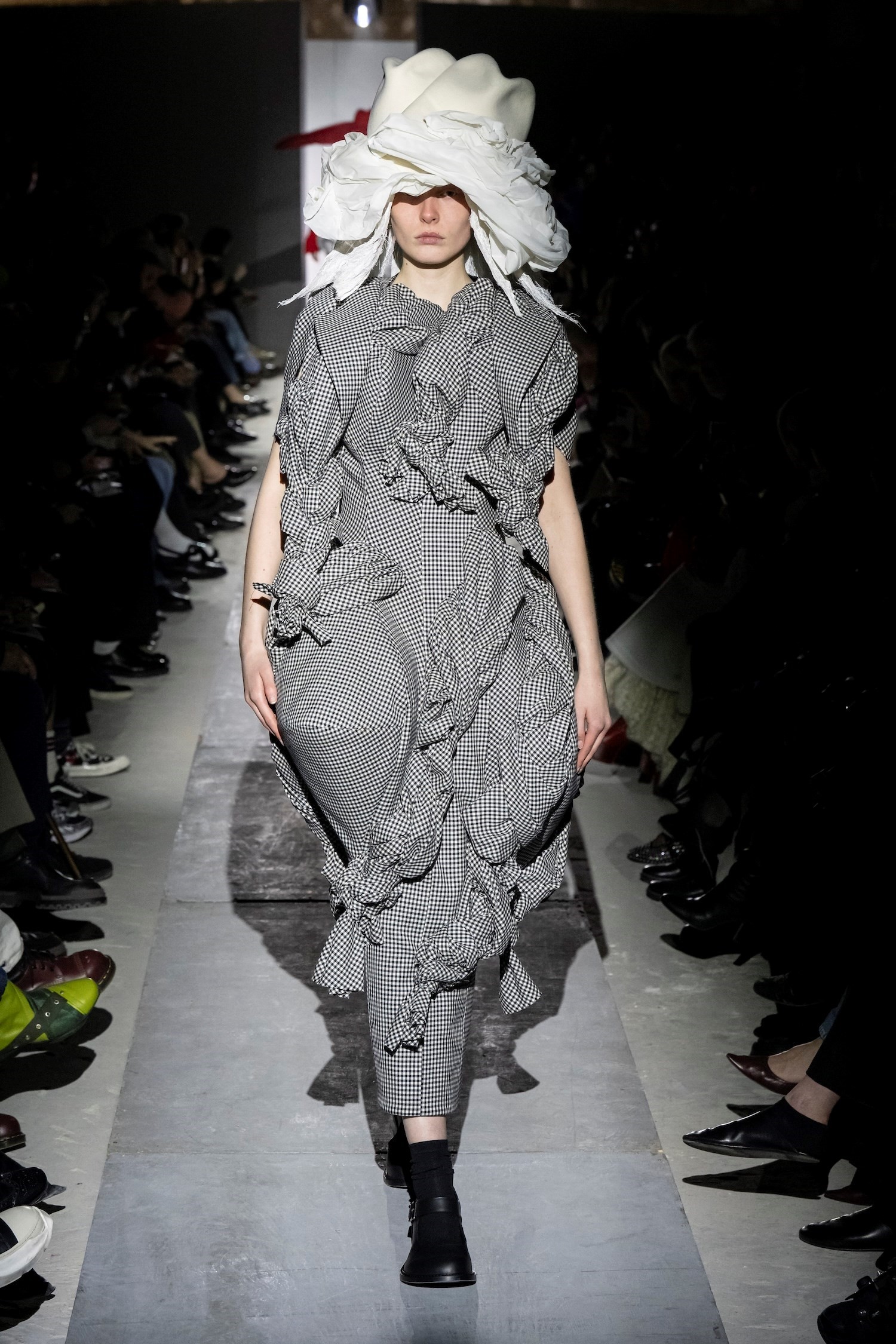
Kawakubo’s Comme des Garçons menswear show in January – titled To Hell With War – made an unequivocal political statement. This was political, socio-economic, and aimed at the fashion industry as well. Smaller is stronger was the title Kawakubo gave to this collection, of just 20 looks. And Comme des Garçons, although successful, is markedly smaller in turnover than other behemoth houses that dominate fashion today. But that is no true and accurate measure of success, or impact. Because, creatively, Rei Kawakubo is a giant.
